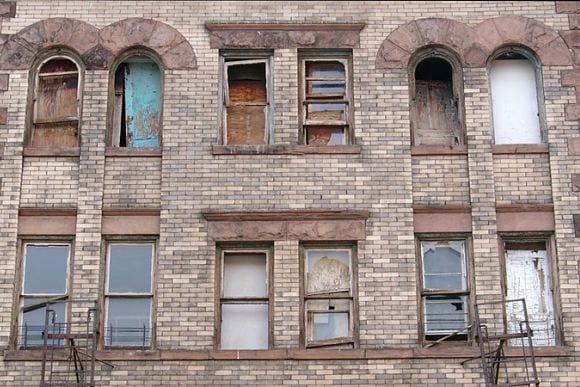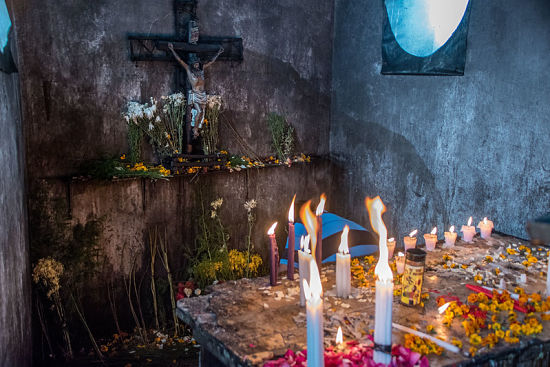Afterlives are proliferating. Whether it is empire or destruction, Ebola or punk, revolution or waste – there seems to exist hardly anything these days that does not have an afterlife. If Google Scholar’s inventory of academic knowledge production is anything to go by, we are faced with a veritable boom. Publications with “afterlife” in the title have doubled in number every five years since the beginning of the millennium. While the period between 2000 and 2005 saw 325 afterlife publications, in the last five years alone that number has risen to 1350.
But quite what sort of a phenomenon is an afterlife? As afterlives have proliferated, so has their semantic field expanded. Look up afterlives on Google Scholar, and you will encounter much more than exegeses of human life after death. The afterlife has taken on new life as an expansive metaphor for “an instance of continued or renewed use, influence”, as the Oxford English Dictionary has it. The afterlife has thus given way not only to an afterlife but to the possibility of multiple afterlives. Released from the human life cycle, moreover, afterlives are pushing the boundaries of what and who counts as alive. But what conceptual purchase does this semantic expansion offer? This thematic thread seeks to submit to scrutiny a concept that more often than not remains an underexplored metaphor. What forms of temporal experience, we ask, does the notion of afterlife allow capturing? How can it push us to rethink the boundaries of vitality? And, not least, what might the contemporary proliferation of afterlives tell us about our anxieties concerning life and its ambiguous endings in the 21st century?
Afterlives carry out conceptual labour along two main axes in the contributions making up this thread. First, the term allows addressing experiences of time that defy neat framing in between beginnings and ends, births and deaths.
Afterlives suggest succession: a life must have ended for an afterlife to ensue.
Loss, damage and rupture are the formative ground from which afterlives arise. And yet afterlives gesture at the fact that life, somehow, goes on. What we are thus confronted with are what Avery Gordon has so felicitously written about as “endings that are not over”; endings with an “after” that retains a sense of vitality. Yet afterlives are not (or not necessarily) rebirths. They suggest a more complex temporality than that proposed by life cycle models plotting a succession of birth, growth and decay, so dear to both anthropologists and civilizational discourse.
Rather than of rebirths, afterlives speak of remains. Defying linear temporality, afterlives imply forms of succession and causality that are not always direct and determinate. Instead of establishing connections by drawing a line between two points on a flat sheet, afterlives encourage us to look for the novel constellations that emerge when that sheet of paper is crumpled. If afterlives are about what remains, they are also about what returns. They point to what haunts that which might otherwise be celebrated as an unencumbered, fresh start.
Afterlives insist on continuity in the midst of rupture and on persistence in the face of loss. As such, they upset fantasies of blank slates and new beginnings.
Some of the terrain that we cover in this thread might look like that traditionally covered by memory studies. Compared to memory, however, afterlife proves a more capacious term when it comes to accounting for how the past extends into, interrupts, or impinges on the present. At the risk of overstating the contrast, one could argue that memory works through the modality of the passé composé – of a past safely closed off from the present, available for intentional recall – while afterlives suggest a temporality of the past imperfect. The latter, Ann Stoler suggests, renders the remains of the past less “inert” objects than “vital” figurations.
But what kind of vitality are we talking about here? What kind of lives, in other words, are afterlives? These questions point at the second issue that contributions to this thread are grappling with. In his essay “The Task of the Translator,” Walter Benjamin reflects on how works of art live on in their translations. Life, he asserts in the essay, is not defined by “organic corporeality” but by the fact that something “has a history of its own.” Disentangling life from corporeality, Benjamin opens up a conceptual terrain where structures and infrastructures, objects and landscapes, ideas and ideologies come alive. The vitality at stake here takes multiple forms: it may manifest when material objects affect bodies, exerting a gravitational pull as rubble does in Argentina’s Salta region or making us trip like the Stolpersteine Mandel and Lehr write about.
Afterlives may appear through frightful possession (Masquelier), or by opening up horizons of friendship that defy the lines of ethno-national identification (Petrović).
Vitality may also lie in the moral demands that the past exerts on the living, whether that past is embodied in heroes and martyrs (Chaib, İlengiz, Moffat) or in the ruins left behind by industrial labour (Goodwin-Hawkins). As “untimely interferences” (Moffat), afterlives defy easy instrumentalization. Giving a spectral life to pasts concealed, repressed, and rejected (Masquelier, Saglam), they represent a vital site for negotiating, contesting and challenging the very ground of belonging and inclusion (Zengin).
Asking about the vitality of afterlives also means thinking about the enchantment that lurks in disenchanted worlds and the animate power of things. Religious traditions of pondering life after death, worlds populated by spirits, and landscapes animated by magic forces all alert us to realms of existence and agency beyond the here-and-now. As a conceptual lens, afterlives force us to reckon with transcendent beings, intangible spirits and the otherworldly. This “agency of the no longer” (Masquelier) is one that intellectual disciplines steeped in methodological secularism do not always find easy to come to conceptual terms with.
Attending to the afterlives of revolutions and railway, friendship and forests, martyrs and madmen, the authors of this thread make no ontological pronouncements about the nature of afterlives’ potency. Rather, they explore what social relations, practices and ideologies endow afterlives with force and inquire how that potency is experienced, contested and resisted. As such, they show how afterlives, as they draw absence, loss and demise into the present, raise potentially troubling questions about social justice and retribution and engender fields of political contestation and historical reckoning.
Featured image by Rab Lawrence on Flickr (CC BY 2.0)












1 Comment